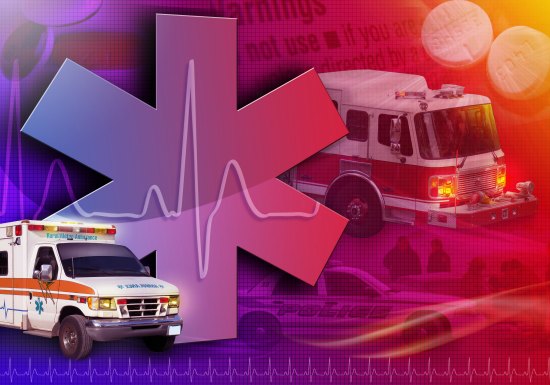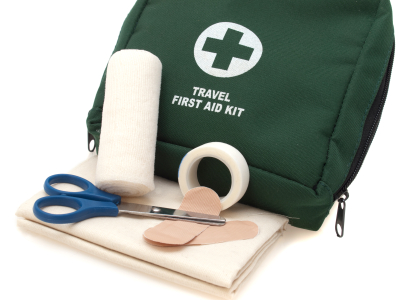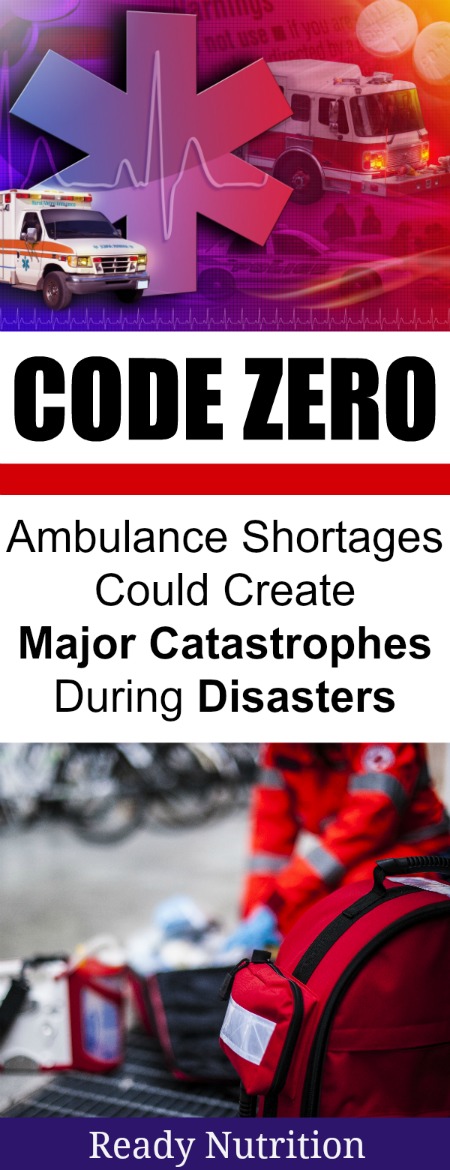
Will 9-1-1 and its emergency services always be there for us? Recent statistics on the shortages of ambulances in some cities in the United States say maybe not…especially during a disaster.
It can be easy for the public to assume that when they call 911, the cavalry will arrive quickly to save them, will know what to do, and will have the resources to take care of their every need. But what many fail to understand is that there’s a very serious staffing crisis in the field of emergency medical services, and many major cities are feeling the effect. That effect is compounded in rural areas. And it isn’t just the U.S. that is experiencing this understaffing of EMS units. It’s happening in Great Britain as well.
The Journal of Emergency Medical Services stated that rural EMS departments are facing the biggest challenges. On-the-job stress is not unusual for EMS workers and combined with long hours, low pay, and an increase in ambulance calls, this is causing their ranks to thin as co-workers burn out and quit as they snag higher paying and lower stress jobs with better hours. The emergency worker shortage, seen nationwide, could endanger patients’ lives through increased response times, and a disaster could mean many go without the vital medical care they will need to save their lives.
In the city of Hamilton in Ontario, Canada, in January of this year alone, there have been 31 situations where one or no ambulance was available to respond to an emergency. This is known as a “code zero.” It was the highest monthly level in five years and even the mayor has taken notice:
I am at the general with a friend for care & there are 8 ambulances & 16 @HPS_Paramedics waiting for hours to off load patients. I am told this is normal! Another 7 ambulances waiting @ #St. Joseph's. Mindboggling problem that must be fixed @RobMacIsaac & @Kathleen_Wynne #HamOnt pic.twitter.com/GcoUp2ueYF
— Fred Eisenberger (@FredEisenberger) January 30, 2018
This shortage of ambulances and EMS staff could affect us all should a disaster strike. The average response time is already 15 minutes and 19 seconds, and with these reported shortages, patients often wait hours to be transported to the hospital. That’s a rather long time for a person suffering from a heart attack. But with government funds and promises always limited to what can be taken from others, what can you do to protect yourself and give you and your family a fighting chance after a disaster when an ambulance is just not available?
What You Can Do:
You need to start by knowing the basics. Learn how to recognize the signs of a medical emergency. Knowing these signs and acting quickly could save the individual’s life. In an emergency medical situation time is very important and people should be treated immediately and to the best of your ability.
Once  you have become aware of what could constitute a medical emergency, you’ll need to know how to provide basic trauma care until help can arrive – whether it be soon, or days later. Writer Jeremiah Johnson, who was a Special Forces Medic, EMT, and is ACLS-certified, with comprehensive training in wilderness survival, rescue, and patient-extraction and has written extensively on the subject. Read up on some of his emergency medical care articles and consider having them printed for your emergency binder. You should also take the time to study trauma care and read about it so you’ll be well prepared to offer help if you need to.
you have become aware of what could constitute a medical emergency, you’ll need to know how to provide basic trauma care until help can arrive – whether it be soon, or days later. Writer Jeremiah Johnson, who was a Special Forces Medic, EMT, and is ACLS-certified, with comprehensive training in wilderness survival, rescue, and patient-extraction and has written extensively on the subject. Read up on some of his emergency medical care articles and consider having them printed for your emergency binder. You should also take the time to study trauma care and read about it so you’ll be well prepared to offer help if you need to.
Know How to Provide Basic Trauma Care Until Help Arrives
A Green Beret’s Introduction to Trauma Medicine
Basic Emergency Trauma Supply Considerations
When There Is No Doctor: Caring For Head Trauma
A Green Beret’s Trauma Guide to Bandaging and Splinting
Trauma Medicine: First Aid For Burns
How To Use and Apply a Tourniquet
Plan for the Worst & Train
There could be significant delays for those who require medical attention during disasters and inequitably this leads to systemic breakdowns. Plan for the worst and learn the basics of emergency medical care.
Educate Yourself
Read the attached guide, When there is no Doctor. This valuable document was developed and written many years ago for use in third world countries where medical help was not available. Its use in an emergency situation will be priceless.
Learn First Aid
The Red Cross, the YMCA, and many other community organizations offer lessons and instruction in basic first aid techniques. Many individuals have had the advantage of learning first aid in Boy Scouts and Girl Scouts or perhaps even in the military, but the rest of us need to take the initiative. By learning first aid, you’ll know valuable basics such as how to care for someone, how to stop bleeding and knowing how to treat infections. Knowing basic first aid should be a priority for everyone, especially those already living in rural environments. Apply this to your everyday life and become comfortable with thinking about the potential medical needs of others. Here’s one example of how I personally apply this to my life:
As a pee wee flag football coach (ages 5-8), before checking for enough footballs or flags for games and practices, I make sure that I have my first aid kit. Even if I know I haven’t used it, I check my kit anyway to make sure I’ve got a minimum of three instant cold packs and some gauze. (This reminds me of basic gun safety: even if you know your gun is unloaded, check to make sure it’s unloaded before handling.) It may seem over the top, but getting into the mindset of preparedness and safety will be much easier when it can be applied to your own real-life situations. Plus, if one of those kids ever needs a cold pack after a fall or gets a bloody nose, their parents will be thankful that I decided to think ahead. I’ve also taken basic first aid and CPR courses just in case; which leads me right into the next tip.
Learn CPR
Experts now say that CPR—even inadequately done—is better than no CPR at all. Many folks shy away from learning CPR because mouth-to-mouth resuscitation makes them uncomfortable. Lately, it was reported that CPR without mouth-to-mouth resuscitation is adequate enough and could save a life. What are most significant are the multiple chest compressions. Most areas offer some basic CPR courses and even if you have to drive a little way to attend, it could be life-saving to do so.
Talk about medical plans with your family
At the next dinner with the family, discuss what should occur if someone needs medical attention. Who in the group could insert sutures if needed? If you have children in the group, they should be told it’s ok to be afraid and it is ok to discuss their uncertainties. Keep in mind that the more you talk about what may occur and how to help in a medical situation, the less terrifying it can be.
Preparing for a medical emergency seems like a daunting task, but once you’ve prepared yourself mentally for the possibility that anything can happen, it becomes easier. It will become second nature to think of the safety of others and the medical supplies needed as you continue to learn. And you can always start small if you feel overwhelmed. Apply basic medical preparedness to your personal life. For example, will I need a tourniquet for a pee wee flag football game? I certainly hope not. The chances of that are incredibly slim, so I avoided tossing one in my bag. But I could make my own and apply it if necessary. However, bloody noses, sprained ankles, bloody knees, and kicked shins are not few and far between, so those I am highly prepared for.

